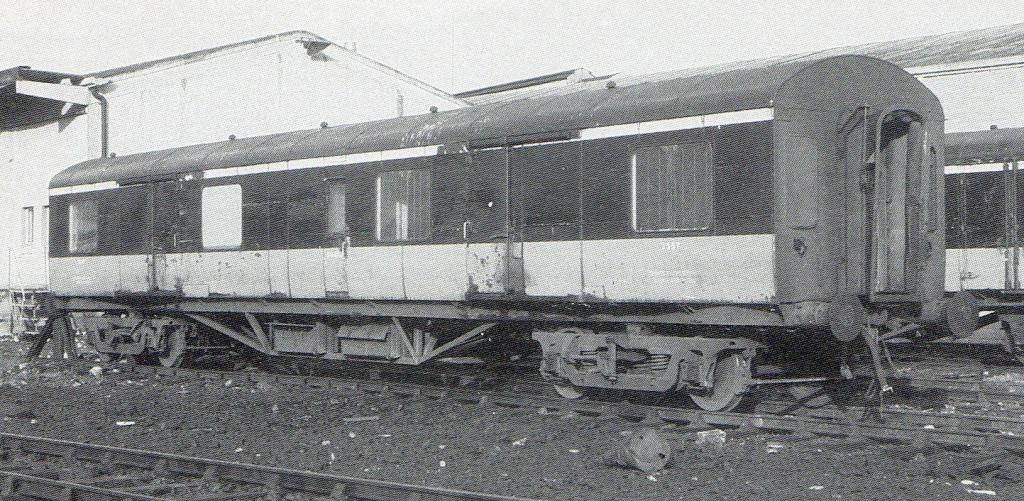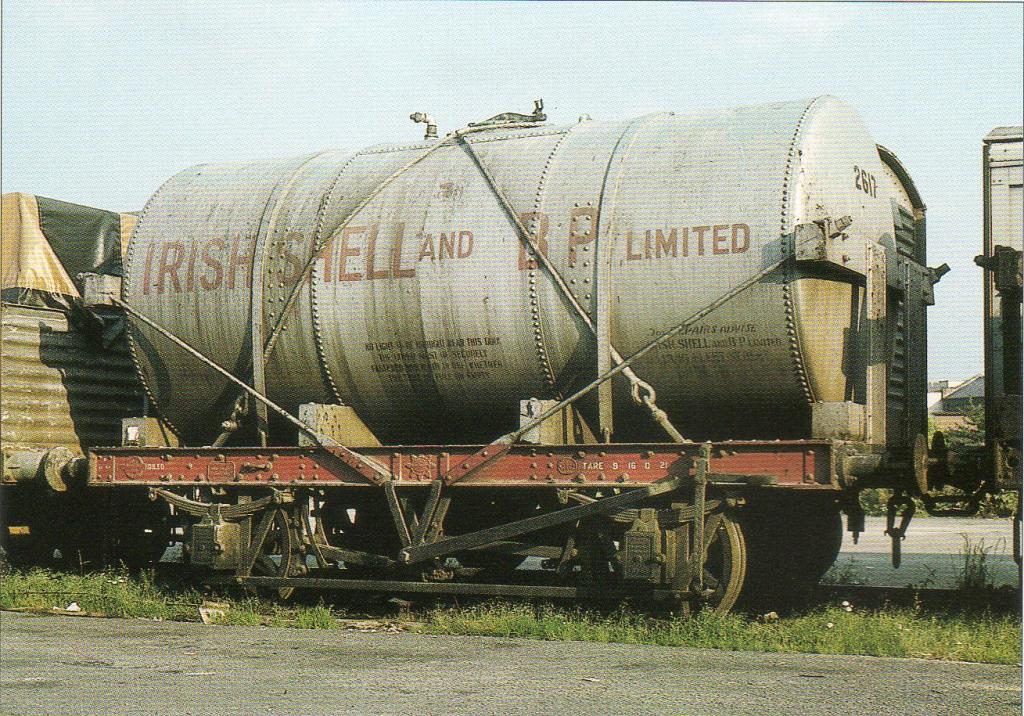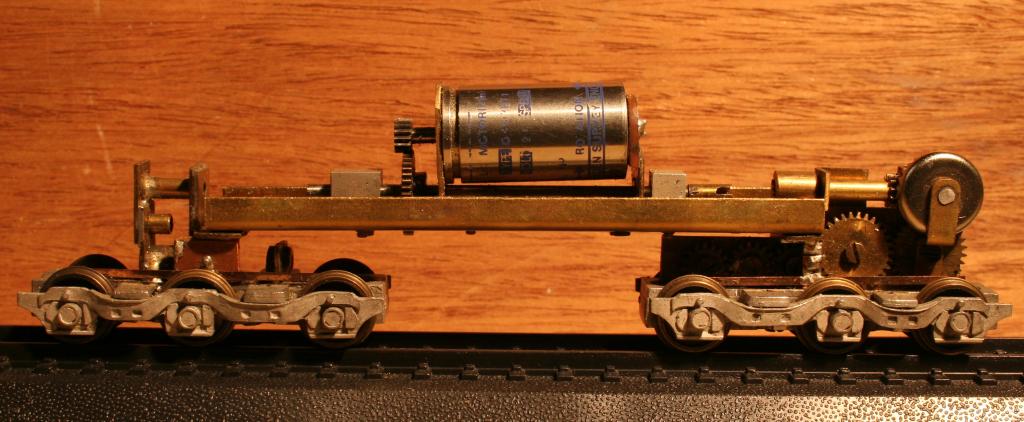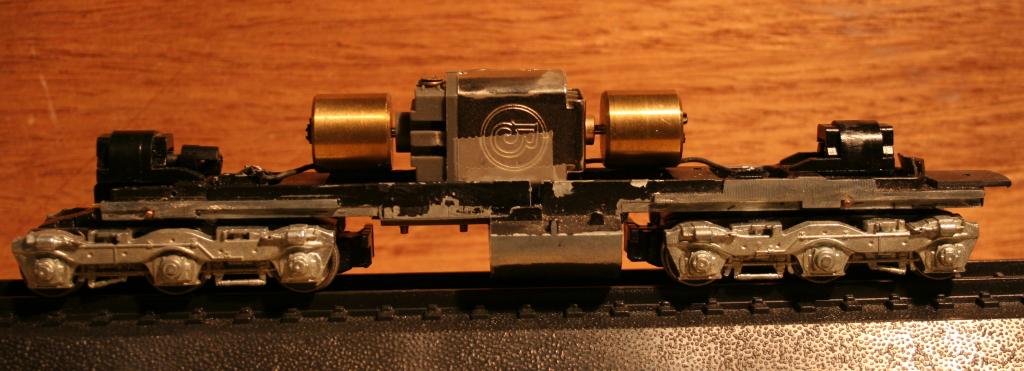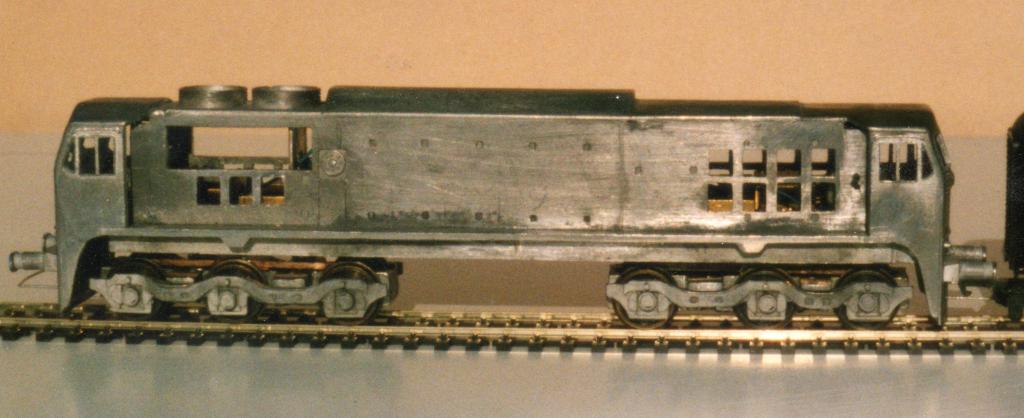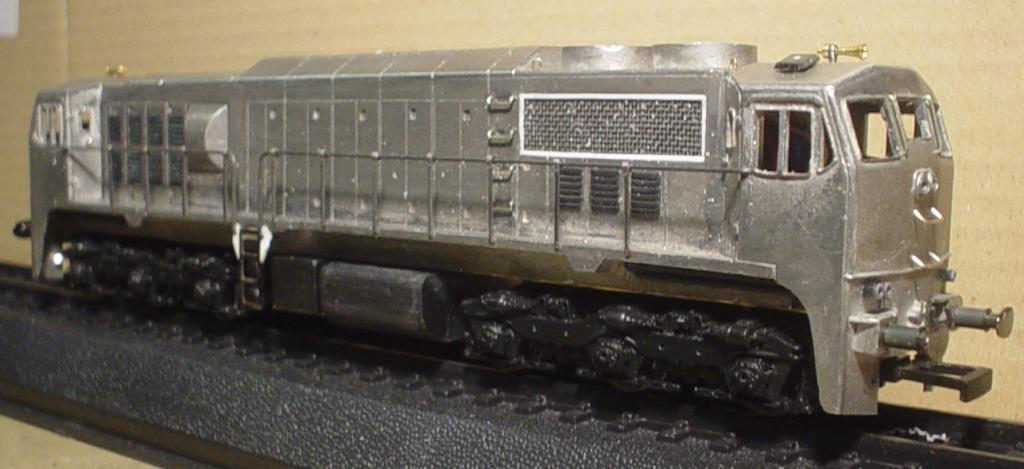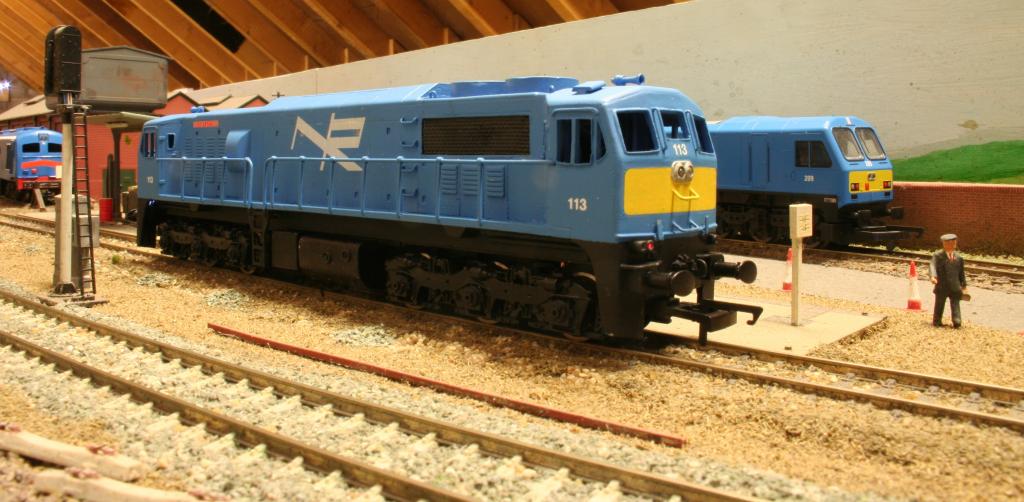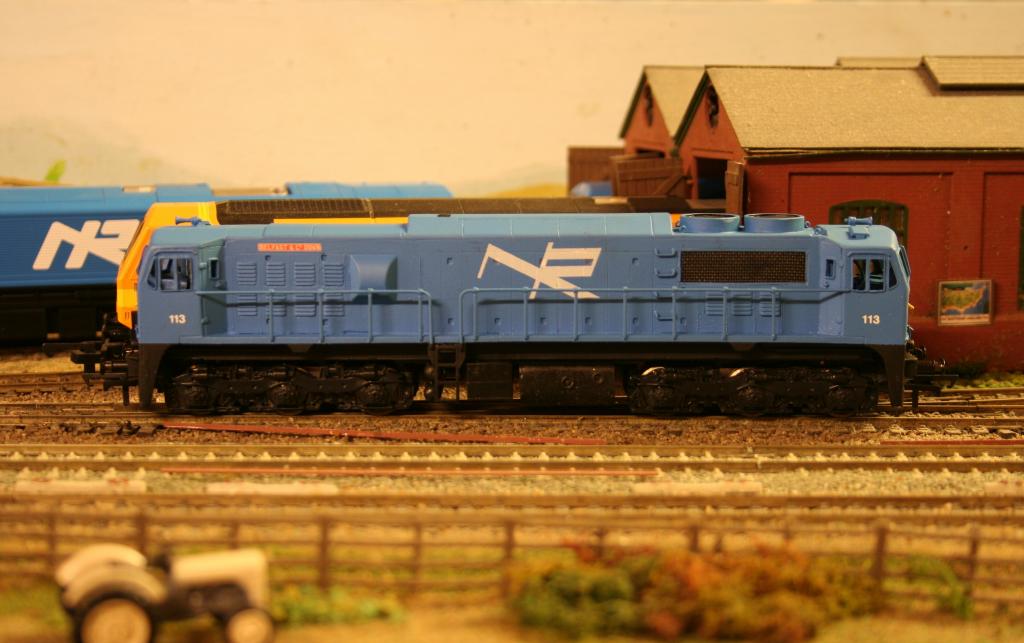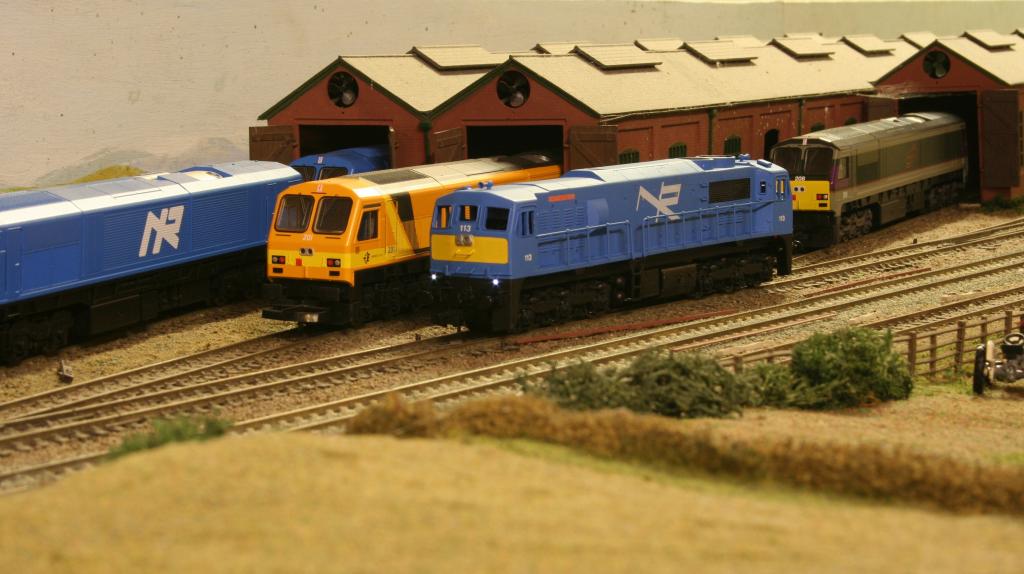-
Posts
547 -
Joined
-
Last visited
-
Days Won
1
Content Type
Profiles
Forums
Events
Gallery
Blogs
Store
Community Map
Everything posted by Dhu Varren
-
This mixture does match the Precision paint colour as well. It was the Precision colour that I used initially, but the ban on sending even small quantities of paint by post in the UK led me to find a local source of paint.
-
Revell No 30 mixed 50/50 with Revell No 85 gives a nice satin finish orange, which is a good match with MM Cravens coaches.. Railtec Transfers also have a good range of Irish transfers, including the broken wheel logo.
-
The Mk 2 corridor coaches obtained from BR were converted to open layout, however, the roof detail, ie ventilators, was not altered. The ventilators on a corridor coach were in a straight line offset to one side, namely the compartment side. The picture on the VCT website shows that the ventilators are on the side away from the camera, meaning that the side nearest the camera would have been the corridor side.
-
I will be at the exhibition for the whole three days operating 'Craigellachie' with the Moray MRG. If anyone has the time, and I appreciate that the show has a lot to take in, it would be great to meet and have a quick chat. Just ask for DJ.
-

Belfast Model Shop DCC Sound Issue
Dhu Varren replied to Warbonnet's question in DCC, Electrics and Electronics
A friend recently had a similar problem with a loco fitted with a Zimo decoder and asked me to check it out. I could find nothing wrong with it, and it worked fine on my Lenz system. He also was using the same Lenz system, but the loco would only run at a crawl on his. I carried out a factory reset to his Lenz control unit, not the handset, and, hey presto, the loco ran fine after that. -
I had a couple of 141/181 with broken handrails and emailed customerservice@murphymodels.com and in no time got a response from them saying they would see if they had any. They did, and sent them FOC. Brilliant after sales service.
-

Anyone tried one of these in an A?
Dhu Varren replied to BosKonay's question in DCC, Electrics and Electronics
I agree they do have a number of Select versions for some of the V4 sound files, but not all of them, and not including the 071 and 201 sound files. -

Anyone tried one of these in an A?
Dhu Varren replied to BosKonay's question in DCC, Electrics and Electronics
Unfortunately, it is not possible to program a Select decoder with anything other than a sound program produced specifically for it. -
-

Anyone tried one of these in an A?
Dhu Varren replied to BosKonay's question in DCC, Electrics and Electronics
Seems to be a lot of money for an 'ish' engine sound, and probably totally wrong horn. A couple of years ago, I purchased a Loksound Select sound decoder on ebay from a shop in Atlanta. They offered to program it with any loco sound from the Loksound library. At that time no one was doing Irish sounds, so I went for an EMD GP39, which the library said was the same sound as an 071. Other sounds suitable for Irish locos are in the library, see link below. The Loksound Select decoder comes with a choice of horn sounds, all American, but at least one is similar to an Irish horn. The Select decoder is the same technology as the V4 decoder, except that the actual sounds are not editable, or replaceable. Function mapping is exactly the same as the V4. The up side of all this is the price. At the time I paid £55, including shipping from the USA, just slightly more than half of what I would have paid in the UK for a V3.5. http://www.esu.eu/en/downloads/sounds/ -
That would be a terrible waste of money, to buy an Irish liveried coach just to paint it grey. Just buy a readily available secondhand one in BR livery and paint that one grey.
-

Question re CIE Coaching Stock ( Mk2A etc)
Dhu Varren replied to Junctionmad's topic in Photos & Videos of the Prototype
The big giveaway is the Mk 1 Generator Van. The secondhand Mk 2s could only work with the rebuilt Dutch Vans, due to their oddball heating system. -

Question re CIE Coaching Stock ( Mk2A etc)
Dhu Varren replied to Junctionmad's topic in Photos & Videos of the Prototype
Secondhand Mk2s as follows. All converted to Open Standard except 4401 & 4402 which were Buffet Open Standard. 4101, 4102, 4110 Mk 2a Ex BR TSO 4103 to 4107 Mk2c Ex BR FO 4108 Mk 2 Ex BR SO 4109 Mk 2b Ex BR FK 4112 Mk 2c Ex BR FK 4113, 4114 Mk 2a Ex BR FK 4401, 4402 Mk 2b Ex BR FK All were air braked with different electric heating to other coaches, and could not run in service with any other type of coach. Three Dutch vans were converted to run with these ex BR coaches. Pictures of some of these coaches can be found on the site below. http://www.railfaneurope.net/pix/ie/car/IE/pix.html -

Question re CIE Coaching Stock ( Mk2A etc)
Dhu Varren replied to Junctionmad's topic in Photos & Videos of the Prototype
The secondhand coaches referred to by Junctionmad were a mixture of Mk2, 2a & 2b bought secondhand from BR in 1989/90. The coaches in Glenderg's pictures are the Mk2d coaches supplied new to CIE in the early 1970s. -

Question re CIE Coaching Stock ( Mk2A etc)
Dhu Varren replied to Junctionmad's topic in Photos & Videos of the Prototype
These coaches were put into service around 1990/91. I have not seen any pictures of them with bright window frames, but anything is possible. They did start off with orange roofs which were later changed to black. I suspect they were used all over the system, as I have seen pictures of them in Belfast, and on the lines out of Heuston. -
A couple of pictures I found in my collection. My notes tell me this is Class A tank 2617 taken at Belfast. My notes tell me this is Shell-Mex and BP Class B tank 271 taken at Adelaide.
-
-

Which DCC sound chip for MM 141/181
Dhu Varren replied to Noel's question in DCC, Electrics and Electronics
I was in communication with 'Legomanbiffo' about 18 months ago to persuade him to produce a sound decoder for an NIR 80 class. He seemed quite interested in doing so, to the extent that I provided him with some horn sounds. He confirmed recently that he was still on the case. -
I apologise, but my statement has obviously been misunderstood. The phrase '071 and 5 bogies' is railway speak for an 071 and five bogie coaches.
-
Working fine for me.
-
Who mentioned anything about freight trains?
-
Thanks everyone for the comments. It certainly was a challenge, but it has turned out better than expected. Although these kits from MIR were not particularly good by today's standards, it was all we had twenty five years ago, and we were glad of them.
-
Just carried out a similar test over 3m with 071 and 5 bogies. Using Noel's calculation figures, averaged times gave a speed of 79mph with CV5 at 255. Track voltage reading 18.25v.
-
It has maybe something to do with the voltage at the track. Different control equipment/transformer combinations can sometimes give different track voltages.
-
As a long standing member of the ‘Unfinished Projects Club’, I have to announce the virtual completion of my second oldest unfinished project. Just need to work up to fit glazing. Like the Phoenix, not the CDR Shunter, my MIR Class 071/111 has risen from the ashes. Way back in 1990, I splashed out on an MIR Class 071/111 kit. At that time it was a whitemetal kit, and I have to say I was bitterly disappointed with the quality of the castings. It reminded me of MTK kits. In an attempt to improve the appearance, I cut out all the grills and ventilators which were very inconsistent in their quality and positioning. The intention was to replace them with something better. Then kit was then assembled and a chassis built out of brass, using the bogies provided and powered by a nine pole aircraft instrument motor. Disappointed with the result so far, the loco was consigned to the ‘unfinished project’ box, where it lay for twenty two years with the odd trip to exhibitions for display on the ‘how not to do it’ stand. (incidently not my longest unfinished project. My 80 Class DEMU is about nine months older, but for very different reasons). Early in 2014, with four Murphy 071/111s on the layout, I decided it was time to do something with the MIR loco. Consideration was given to melting it down for use as ballast weight, but refurbishment was the final decision. The chassis was replaced with a heavily modified Athearn SD40 chassis & bogies with a Hornby flywheel motor secured with silicon, but the bogies still did not look right as the body sat too high. This was subsequently replaced with a scratchbuilt brass chassis with Athearn SD9 bogies and a Hornby flywheel motor, much better. Again, the body sat too high, so 1.5mm was removed from the end skirts, and the body lowered. A great improvement. The underframe details utilised bits from the MIR kit with the fuel tank fabricated from plasticard. The original steps were ridiculously small, so they were consigned to the junk box, and new steps fabricated from Hornby metal ladders and bits of plasticard. The gaping holes in the body were filled with plasticard scribed with ventilators, and the radiator grilles, both top and sides, covered with fine wire mesh from a Tesco tea strainer, a bargain at 50p. The top grilles were fitted direct to the body using superglue applied after fitting, which disperses by capillary action. The side grilles used the same method onto plasticard which was then cut and filed to fit the hole. Extra detail was fitted using any suitable material. The horns were replaced with finer brass ones. The buffers were replaced with Hornby Class 50 ones. Wire handrails and the bodyside ladder were made up and fitted. Lights were all drilled out, and suitable LEDS fitted. Chunks of the end skirts were removed, as per the Murphy locos, and small tension lock couplings fitted to the bogies. A sound decoder and speaker were also fitted, and the loco tested. There were some minor issues with clearances inside the body due to lack of space in the narrow body, but they have all been resolved and the loco is now a good powerful runner. Well it would be powerful with all that weight. It was decided that since the loco would not match the Murphy Models 071/111s in quality, it should be painted in a totally different colour to any of the other 071/111s, so that direct comparisons would be less likely. NIR light blue was chosen as I did not have any 111s in this colour . The loco was to be number 113 as I already had 111 (in dark blue) and 112 which then kept things simple for DCC, as I could use 8113 with the full number to differentiate between the two. The loco was then primed with Halfords gray primer. Once the primed loco was inspected for any flaws and rectification carried out, it received it’s coat of NIR light blue, with black underframe, and decals applied. The loco will never in a million years match the quality of the Murphy Models 071/111, but at least I have the satisfaction of having built this one to a reasonable standard. The original chassis with driveshaft removed. It was intended to be a double bogie drive, but never got beyond the experimental single bogie drive. Chassis number two with driveshafts removed. Body with holes with original chassis. Body prior to painting. Finally completed (less glazing).
.png.c363cdf5c3fb7955cd92a55eb6dbbae0.png)


